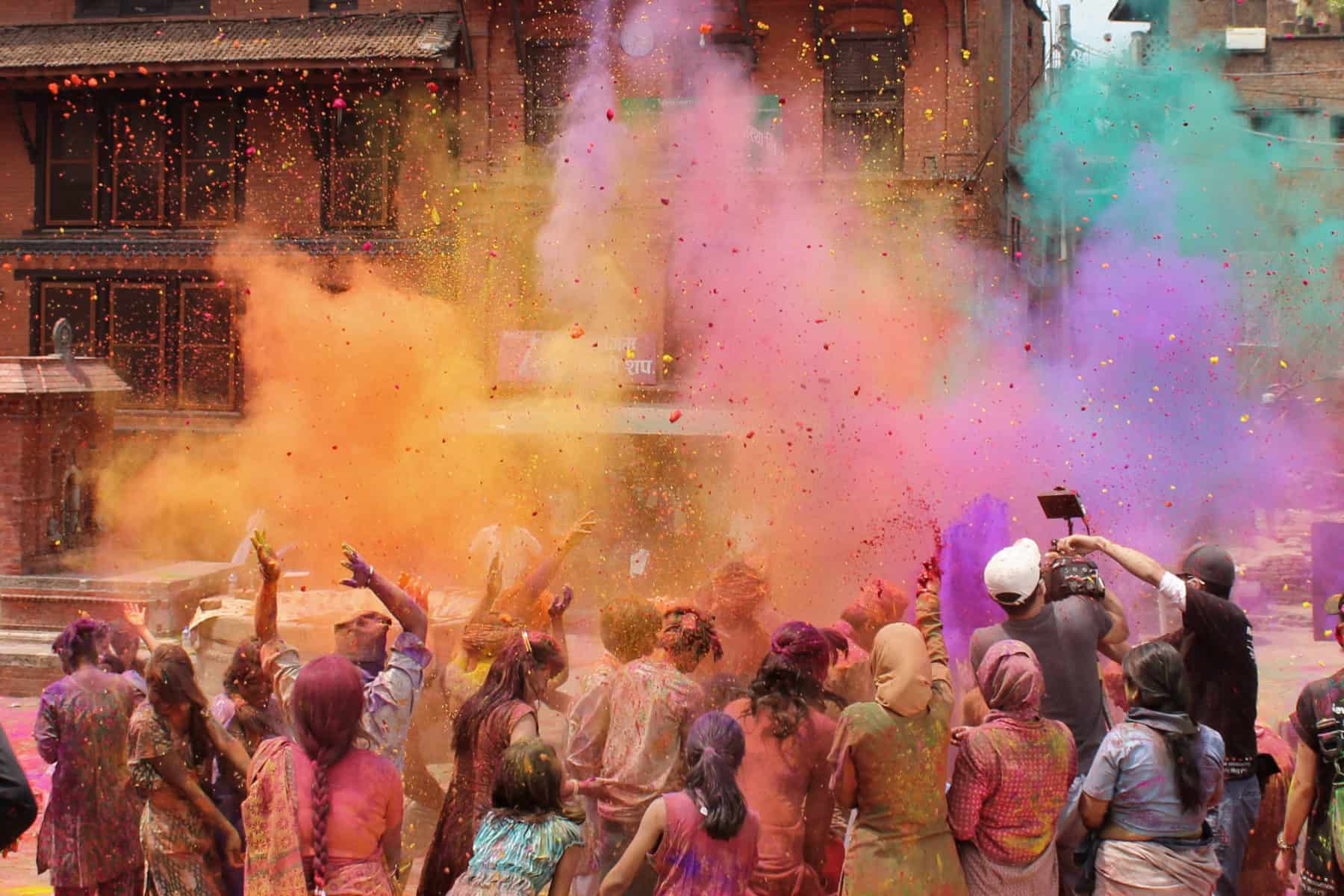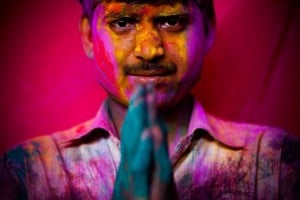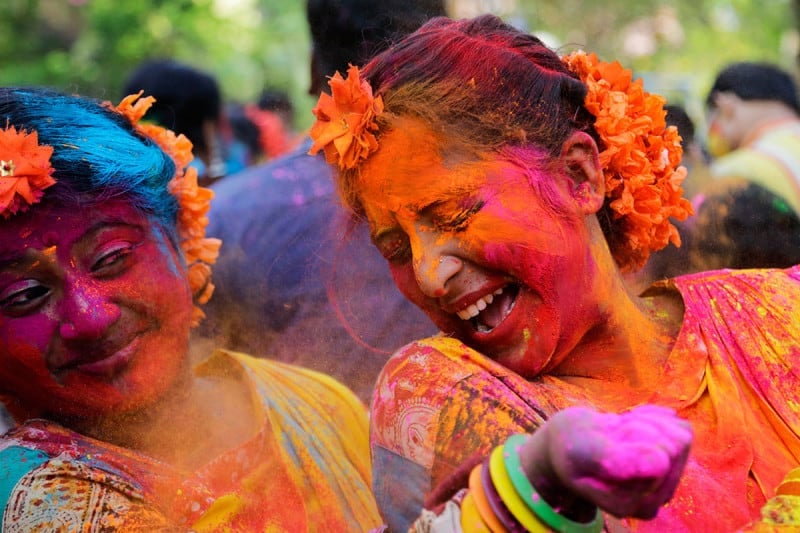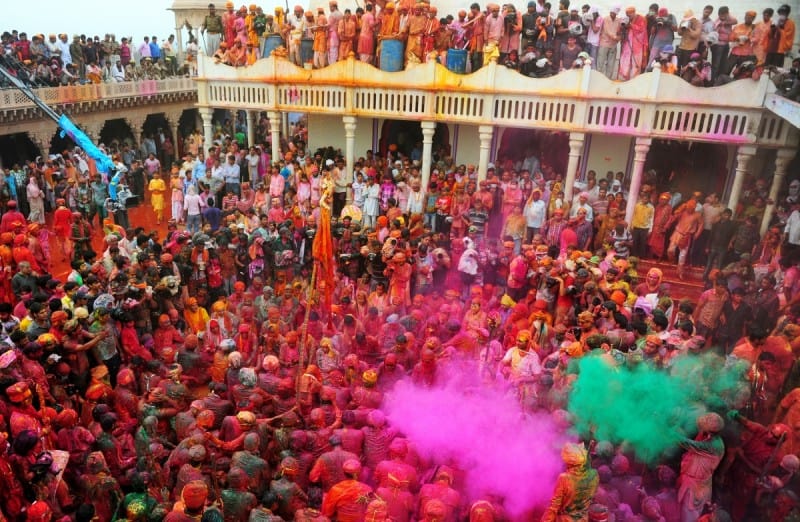
What is Holi Festival?
Holi, a traditional Hindu festival, celebrates the beginning of spring and takes place over two days. It is a celebration of fertility, colour and love, as well as the triumph of good over evil. Holi is one of the major festivals in India and is the most vibrant of all.
Although the festival originated in India and is still widely celebrated there as a religious festival, it has been adopted in many places around the world. But what is Holi Festival?
It is best known for the powder that revellers throw on each other, leaving festivalgoers coated in colour by the end of the day. But this is just one part of Holi, which is split into two events: Holika Dahan and Rangwali Holi.
Holika Dahan takes place the night before Rangwali Holi. Wood and dung cakes are burned in a symbolic pyre to signify good defeating evil (in Hindu Vedi scriptures, the God Vishnu helps burn the devil Holika to death). The next morning, people gather in public spaces and take part in Rangwali Holi. This is a raucous affair where people chase each other around, throwing handfuls of coloured powders (known as gulal) at one another while getting drenched in water.
When is Holi Celebrated in India?
The timing of Holi is synchronised with the moon, which means that the dates of each celebration varies year on year. In 2024, Holi festival will take place on 25 March.
The Significance of Holi: Why is it Celebrated?
In the scheme of Hindu celebrations, Holi is a relatively secular one. It draws on various mythologies. First and foremost is the burning of the devil Holika, but it also draws on the legend of Radha and Krishna. Krishna loved Radha, but felt self-conscious about how different their skin-colours were. So on the advice of his mother, he went and playfully painted her face so it was the same colour as his. It is said that lovers often celebrate Holi in this tradition, by colouring their faces the same colour during the celebrations.
Local man celebrating HoliHowever, Holi is mostly seen as a time for people to get together and enjoy themselves. It is purported to be a time when friends, families and communities can get together without any concern for caste or ethnicity, although how much this holds true in reality is debatable. That said, certain groups take its religious elements more seriously than others. In the Braj region of India, celebrations last for 16 days.
What is the Coloured Powder Being Thrown and What Does it Mean?
Historically, the gulal was made of turmeric, paste and flower extracts, but today synthetic versions are largely used.
The four main powder colours are used to represent different things. Yellow, made from turmeric, signifies purity and religious spirit, embodying the energy and optimism of the sun. Green, derived from neem leaves, represents nature and new beginnings, marking the renewal of Spring. Red, extracted from beetroot, symbolises love and fertility, reflecting the essence of life. Recently, there’s been a conscious shift back towards these organic and natural colours, driven by health and environmental considerations. This revival of traditional practices not only safeguards health but also preserves the environment, ensuring the festival’s legacy continues in harmony with nature.
How Do I Get the Powder Off My Skin?
The best way to prevent any powder from sticking to your skin is to moisturise well beforehand. Some people also oil their hair so that the powder is easier to remove, or wear a hat. It is also recommended that anyone taking part uses homemade powders with ingredients that are guaranteed to be non-harmful. One way you can do this is by putting together a mix of flour, water and a few splashes of food dye.

The vibrant colours are a sight to see
Holi Festival Across India: Is it celebrated differently?
Holi manifests differently across India, each region adding its own unique flavour to the festivities. In West Bengal’s ‘Basanta Utsav’, Holi is an artistic expression, with cultural performances and poetry readings. Punjab’s ‘Hola Mohalla’ contrasts the playful throwing of colours with displays of martial prowess, celebrating Sikh valour. These regional variations highlight the festival’s adaptability, reflecting local traditions and historical influences, and showcasing the diversity within the unity of Holi celebrations.
5 Best Places to Celebrate Holi in India
-
Vrindavan, Uttar Pradesh
Vrindavan transforms into a spectacle of colour and joy, marking the spot where Lord Krishna grew up. The air buzzes with week-long festivities, featuring everything from traditional rituals to folk dances, not forgetting the playful Lathmar Holi at the Banke Bihari and ISKCON temples. It’s a scene straight out of a painting.
-
Barsana, Uttar Pradesh
Another home to the spirited Lathmar Holi, Barsana is where you’ll witness a lively tussle of sticks and shields between the women of Barsana and the men from nearby villages. It’s a vivid reenactment of Lord Krishna and Radha’s playful banter, enveloped in laughter and vivacity – a spectacle you simply can’t miss.
-
Jaipur, Rajasthan
Jaipur’s royal backdrop takes Holi to a whole new level of grandeur. The Pink City bursts into life with majestic processions, swirling Ghoomar dances, and a feast of Rajasthani flavours. Celebrating Holi here, against the backdrop of ancient forts and palaces, is like stepping into a regal era. Hear from one of our travellers on their experience of Holi in the pink city of Jaipur.
-
Shantiniketan, West Bengal
At Shantiniketan, Holi morphs into Basant Utsav, a festival of arts conceptualised by Rabindranath Tagore himself. With students showcasing their talents in music, dance, and poetry, the festival embodies a blend of culture and colours, inviting everyone to join in the harmony and beauty of this creative utopia.
-
Jambughoda, Gujarat
At Jambughoda Palace, Holi unfolds amidst nature and royalty with serene elegance. Following closely is the Kavant Festival, where the vibrant tribal culture, dance, and music take centre stage, providing a unique and immersive experience of Gujarat’s diverse traditions and rich heritage. In our off-the-beaten-track Gujarat & Madhya Pradesh holiday suggestion, we’ve included a stay in Jambughoda.
Are you interested in taking part in the Holi festival as part of a holiday to India? Have a look at our India holiday ideas for some inspiration. Alternatively, do get in touch with us on 020 7924 7133 or via email.



